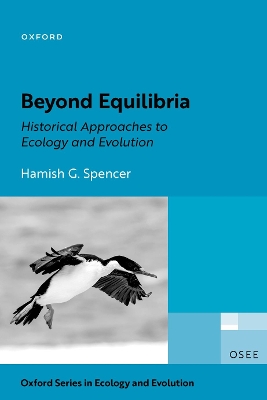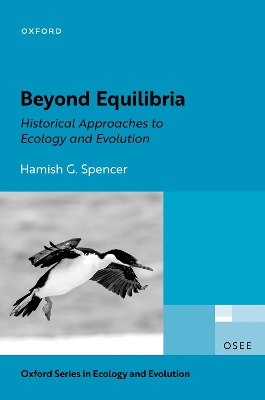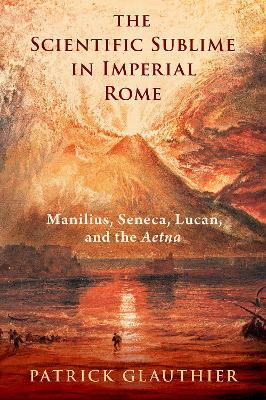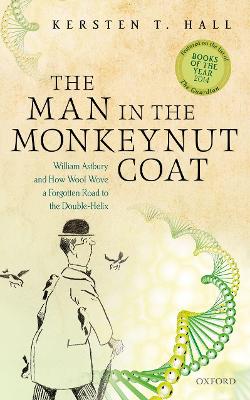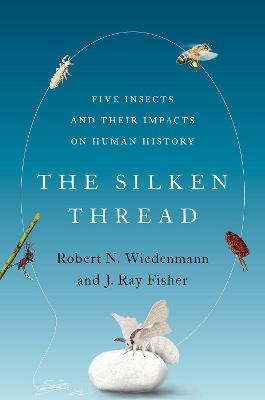Kingdoms, Empires, and Domains
 -10%
portes grátis
-10%
portes grátis
Kingdoms, Empires, and Domains
The History of High-Level Biological Classification
Ragan, Mark A.
Oxford University Press Inc
11/2023
856
Dura
Inglês
9780197643037
15 a 20 dias
Descrição não disponível.
List of Illustrations
Preface
Acknowledgement: copyrighted material
Chapter 1. The Earliest Nature
Primitive concepts of natural entities
Early figurative art
Symbolic language and folk taxonomies
Creation myths
Animal deities and anthropomorphized plants
Transformation and metamorphosis
Metempsychosis, reincarnation, and anamnesis
Transmutation and transubstantiation
Chapter 2. Eastern Nature
The Indian subcontinent
Buddhism
China: the common tradition
China: Confucianism
China: Taoism
China: Mohism
Japan
The "three kingdoms of nature" are not rooted in prehistory
Chapter 3. Philosophical Nature
Hellenic philosophical traditions before Socrates
The Pythagoreans
The Eleatics
The atomists
Empedocles
Diogenes of Apollonia
Socrates
Plato
Aristotle
Theophrastus
Stoic and later triadic divisions of soul or beings
Scepticism
Envoi
Chapter 4. Utilitarian Nature
Lucretius
Seneca
Pliny the Elder
Herbals and pharmacopoeias
Early medical texts
Bestiaries
Summary
Chapter 5. Neoplatonic Nature
Philo of Alexandria
Calvenus Taurus
Plotinus
Porphyry and Anatolius
Iamblichus and Dexippus
Themistius
Athens and Alexandria
Ammonius Hermiae and John Philoponus
Elias and David
Summary: philosophical themes within Neoplatonism
Chapter 6. Christian Nature
Early theologians and polemicists
Origen
Nemesius
The Cappadocian Fathers
Augustine
Pseudo-Dionysius
Boethius
John of Damascus
Summary
Chapter 7. Islamic and Jewish Nature
Islam and the translation of Hellenic philosophy into Arabic
Arabic natural history, an-Na.z.z=am, and al-J=a.hi.z
Al-Kind=i, al-F=ar=ab=i, and al-Mas),=ud=i
The Ikhw=an al-.Saf=a
Al-B=ir=un=i, Ibn S=in=a, al-Ghaz=al=i, Ibn Rushd, and al-Abhar=i
Ni.zam=i Ar=uz=i, al-Qazwini, and later authors
.Sufiyya
The Jewish philosophical tradition: Ibn Daud and Maimonides
Kabbalah
Duran, Alemanno, and Albotini
The rediscovery of Aristotle's natural history
Chapter 8. Monastic and Scholastic Nature
Cassiodorus to Hrabanus Maurus
Eriugena
Anselm, Peter Abelard, and Peter Lombard
Adelard and Berachya
Hildegard and Marius
The School of Chartres
Bernard Silvestris and John Blund
Robert Grosseteste
Thomas of Cantimpre, Bartholomaeus Anglicus, and Vincent of Beauvais
Albertus Magnus and Thomas Aquinas
Bonaventure and Dante
The Fourteenth century
Nicholas of Cusa
From scholasticism to humanism
Chapter 9. Nature's Mystic Book
Oracles and mysteries
Thrice-great Hermes
Universal truths and hidden meanings
Gnostic texts
Macrocosm and microcosm
Alchemy
The Kit=ab Sirr al-khal=iqa
The Sirr al-asrar or Secretum secretorum
Magic
From J=abir to the Renaissance
Three Renaissance humanists: Ficino, Pico, and Agrippa
Paracelsus and the alchemists
Bruno, Fludd, and the nature-mystics
Summary and questions
Chapter 10. Allegory, Myth, and Superstition
Allegory
Beings with exaggerated features
Chimaeras: the borametz
Active transformation: the barnacle-goose-tree
Return from the dead
Monsters and marvels
Ancients and Moderns
Chapter 11. The Return of the Zoophytes
Dictionaries
Guillaume Bude: Roman law (1508)
Otto Brunfels: materia medica (1534)
Francois Rabelais: literature in the vernacular (1546)
Jean Bodin: political theory (1576)
Jacopo Zabarella: Aristotelian logic (1606)
Johann Thomas Freig: Ramist natural history (1579)
Robert Burton: English vernacular (1621)
Juan Eusebio Nieremberg: baroque nature (1635)
David Person: rare and excellent matters (1635)
Henry More: the Spirit of Nature (1682)
Concluding comments
Chapter 12. Plants and Animals
Herbals (from 1475)
The rise of scientific botany 1: 1490-1580
Andrea Cesalpino
The rise of scientific botany 2: 1580-1680
Medieval and early Renaissance animal books
The rise of scientific zoology 1: 1520-1550
The rise of scientific zoology 2: the momentous 1550s
The rise of scientific zoology 3: the encyclopaedists 1560-1660
The rise of scientific zoology 4: curiosities and specialization
Zoophyta: a fourth division of nature?
Plants and animals in 1680
Chapter 13. The Most Wretched Creatures
Multiple worlds
Invisible airborne seeds
Leibniz and monads
Leeuwenhoek and Joblot: little animals observed
Buffon, Needham, and Spallanzani: spontaneous generation
A class of their own?
Summary: one hundred years of little animals
Chapter 14. Continuity in the Living World
The Great Chain under attack
Richard Bradley: A philosophical account
Corals: an ancient enigma resolved
Hydra: a new enigma
Charles Bonnet: the canonical Great Chain of Being
The Great Chain after 1780
Chapter 15. Classifying God's Handiwork
Magnol and Tournefort
Ray and natural theology
Linnaeus
What, then, are fungi?
Adanson, Scopoli, and de Jussieu
Zoophyta as animals
Summary
Chapter 16. Beyond the End of the Chain
Nature as a map
Nature as a network
Nature as a polygon or Easter egg
Nature as a branched tree
Nature as a spiral
Nature as a circle
Quinarian nature
Summary
Chapter 17. From Histoire Naturelle to Anatomie and Morphologie
Denis Diderot and Jean Le Rond d'Alembert
Louis-Jean-Marie Daubenton
Jean-Baptiste Lamarck
Georges Cuvier
Etienne Geoffroy Saint-Hilaire
Felix Vicq-d'Azyr: le regne vivant
Jean Guillaume Bruguiere: a new arrangement of Vermes
Julien-Joseph Virey: evolution along parallel chains
Pierre-Jean-Francois Turpin: vegeto-animaux
Henri Marie Ducrotay de Blainville: infusoria as an appendage
Henri Milne-Edwards: embryology and classification
Jean-Baptiste Bory de Saint-Vincent: Regne Psychodiaire
Summary: France
Chapter 18. Naturphilosophie, Polygastric Animalcules, and Cells
Johann Gottfried Herder
Johann Wolfgang von Goethe
Immanuel Kant: transcendental idealism
German Romanticism
Naturphilosophie
Lorenz Oken
Gottfried Reinhold Treviranus
Alexander von Humboldt
Karl Ernst von Baer
Christian Gottfried Ehrenberg
Cell theory
The last Naturphilosoph: Carl Gustav Carus
Summary: Germany
Chapter 19: Green Matter, Zoospores, and Diatoms
Simple animals, simple plants
How, then, do algae reproduce?
Case study 1: Priestley's green matter
Case study 2: zoospores
Case study 3: metamorphosis
Benjamin Gaillon
Friedrich Traugott Kuetzing
Case study 4: diatoms and desmids
Summary
Chapter 20: Temples of Nature
Britain: three Linnaean kingdoms
Erasmus Darwin
Natural theology
Richard Owen
Vestiges of the natural history of Creation
Charles Darwin
John Hogg
Thomas B. Wilson and John Cassin
Popular natural histories in Victorian Britain
Summary: Britain
Chapter 21: Ernst Haeckel and Protista
Die Radiolarien (1862)
Generelle Morphologie (1866)
New classes of Protista
Sponges and gastraea theory
Monera, protozoa, and protophyta
Das Protistenreich (1878)
Protists and Histones
Four kingdoms of life
The protozoological tradition
The phycological tradition
The bacteriological tradition
The protistological tradition
Summary: Haeckel and Protista
Chapter 22: Beyond Three Kingdoms
Kingdoms and superkingdoms
Four kingdoms (Copeland, 1938-1956)
Five kingdoms (Whittaker, 1969)
Other high-level proposals to 1975
The rise of cellular ultrastructure
Eukaryogenesis 1: Natura facit saltum
Eukaryogenesis 2: science may discover ten
Summary
Chapter 23: Genes, Genomes, and Domains
Introduction: the molecular basis of heredity
Molecular phylogenetics before sequences
The ribosomal RNA Tree of Life
The molecular consensus erodes
Thinking laterally about genomes
Genomes and pan-genomes
Genomes from the environment
Retrospective: the domains of life
Last words on kingdoms, empires, and domains
Appendix: Victorian popular natural histories
Acronyms
Notes
References
Index of names
Index of subjects
Preface
Acknowledgement: copyrighted material
Chapter 1. The Earliest Nature
Primitive concepts of natural entities
Early figurative art
Symbolic language and folk taxonomies
Creation myths
Animal deities and anthropomorphized plants
Transformation and metamorphosis
Metempsychosis, reincarnation, and anamnesis
Transmutation and transubstantiation
Chapter 2. Eastern Nature
The Indian subcontinent
Buddhism
China: the common tradition
China: Confucianism
China: Taoism
China: Mohism
Japan
The "three kingdoms of nature" are not rooted in prehistory
Chapter 3. Philosophical Nature
Hellenic philosophical traditions before Socrates
The Pythagoreans
The Eleatics
The atomists
Empedocles
Diogenes of Apollonia
Socrates
Plato
Aristotle
Theophrastus
Stoic and later triadic divisions of soul or beings
Scepticism
Envoi
Chapter 4. Utilitarian Nature
Lucretius
Seneca
Pliny the Elder
Herbals and pharmacopoeias
Early medical texts
Bestiaries
Summary
Chapter 5. Neoplatonic Nature
Philo of Alexandria
Calvenus Taurus
Plotinus
Porphyry and Anatolius
Iamblichus and Dexippus
Themistius
Athens and Alexandria
Ammonius Hermiae and John Philoponus
Elias and David
Summary: philosophical themes within Neoplatonism
Chapter 6. Christian Nature
Early theologians and polemicists
Origen
Nemesius
The Cappadocian Fathers
Augustine
Pseudo-Dionysius
Boethius
John of Damascus
Summary
Chapter 7. Islamic and Jewish Nature
Islam and the translation of Hellenic philosophy into Arabic
Arabic natural history, an-Na.z.z=am, and al-J=a.hi.z
Al-Kind=i, al-F=ar=ab=i, and al-Mas),=ud=i
The Ikhw=an al-.Saf=a
Al-B=ir=un=i, Ibn S=in=a, al-Ghaz=al=i, Ibn Rushd, and al-Abhar=i
Ni.zam=i Ar=uz=i, al-Qazwini, and later authors
.Sufiyya
The Jewish philosophical tradition: Ibn Daud and Maimonides
Kabbalah
Duran, Alemanno, and Albotini
The rediscovery of Aristotle's natural history
Chapter 8. Monastic and Scholastic Nature
Cassiodorus to Hrabanus Maurus
Eriugena
Anselm, Peter Abelard, and Peter Lombard
Adelard and Berachya
Hildegard and Marius
The School of Chartres
Bernard Silvestris and John Blund
Robert Grosseteste
Thomas of Cantimpre, Bartholomaeus Anglicus, and Vincent of Beauvais
Albertus Magnus and Thomas Aquinas
Bonaventure and Dante
The Fourteenth century
Nicholas of Cusa
From scholasticism to humanism
Chapter 9. Nature's Mystic Book
Oracles and mysteries
Thrice-great Hermes
Universal truths and hidden meanings
Gnostic texts
Macrocosm and microcosm
Alchemy
The Kit=ab Sirr al-khal=iqa
The Sirr al-asrar or Secretum secretorum
Magic
From J=abir to the Renaissance
Three Renaissance humanists: Ficino, Pico, and Agrippa
Paracelsus and the alchemists
Bruno, Fludd, and the nature-mystics
Summary and questions
Chapter 10. Allegory, Myth, and Superstition
Allegory
Beings with exaggerated features
Chimaeras: the borametz
Active transformation: the barnacle-goose-tree
Return from the dead
Monsters and marvels
Ancients and Moderns
Chapter 11. The Return of the Zoophytes
Dictionaries
Guillaume Bude: Roman law (1508)
Otto Brunfels: materia medica (1534)
Francois Rabelais: literature in the vernacular (1546)
Jean Bodin: political theory (1576)
Jacopo Zabarella: Aristotelian logic (1606)
Johann Thomas Freig: Ramist natural history (1579)
Robert Burton: English vernacular (1621)
Juan Eusebio Nieremberg: baroque nature (1635)
David Person: rare and excellent matters (1635)
Henry More: the Spirit of Nature (1682)
Concluding comments
Chapter 12. Plants and Animals
Herbals (from 1475)
The rise of scientific botany 1: 1490-1580
Andrea Cesalpino
The rise of scientific botany 2: 1580-1680
Medieval and early Renaissance animal books
The rise of scientific zoology 1: 1520-1550
The rise of scientific zoology 2: the momentous 1550s
The rise of scientific zoology 3: the encyclopaedists 1560-1660
The rise of scientific zoology 4: curiosities and specialization
Zoophyta: a fourth division of nature?
Plants and animals in 1680
Chapter 13. The Most Wretched Creatures
Multiple worlds
Invisible airborne seeds
Leibniz and monads
Leeuwenhoek and Joblot: little animals observed
Buffon, Needham, and Spallanzani: spontaneous generation
A class of their own?
Summary: one hundred years of little animals
Chapter 14. Continuity in the Living World
The Great Chain under attack
Richard Bradley: A philosophical account
Corals: an ancient enigma resolved
Hydra: a new enigma
Charles Bonnet: the canonical Great Chain of Being
The Great Chain after 1780
Chapter 15. Classifying God's Handiwork
Magnol and Tournefort
Ray and natural theology
Linnaeus
What, then, are fungi?
Adanson, Scopoli, and de Jussieu
Zoophyta as animals
Summary
Chapter 16. Beyond the End of the Chain
Nature as a map
Nature as a network
Nature as a polygon or Easter egg
Nature as a branched tree
Nature as a spiral
Nature as a circle
Quinarian nature
Summary
Chapter 17. From Histoire Naturelle to Anatomie and Morphologie
Denis Diderot and Jean Le Rond d'Alembert
Louis-Jean-Marie Daubenton
Jean-Baptiste Lamarck
Georges Cuvier
Etienne Geoffroy Saint-Hilaire
Felix Vicq-d'Azyr: le regne vivant
Jean Guillaume Bruguiere: a new arrangement of Vermes
Julien-Joseph Virey: evolution along parallel chains
Pierre-Jean-Francois Turpin: vegeto-animaux
Henri Marie Ducrotay de Blainville: infusoria as an appendage
Henri Milne-Edwards: embryology and classification
Jean-Baptiste Bory de Saint-Vincent: Regne Psychodiaire
Summary: France
Chapter 18. Naturphilosophie, Polygastric Animalcules, and Cells
Johann Gottfried Herder
Johann Wolfgang von Goethe
Immanuel Kant: transcendental idealism
German Romanticism
Naturphilosophie
Lorenz Oken
Gottfried Reinhold Treviranus
Alexander von Humboldt
Karl Ernst von Baer
Christian Gottfried Ehrenberg
Cell theory
The last Naturphilosoph: Carl Gustav Carus
Summary: Germany
Chapter 19: Green Matter, Zoospores, and Diatoms
Simple animals, simple plants
How, then, do algae reproduce?
Case study 1: Priestley's green matter
Case study 2: zoospores
Case study 3: metamorphosis
Benjamin Gaillon
Friedrich Traugott Kuetzing
Case study 4: diatoms and desmids
Summary
Chapter 20: Temples of Nature
Britain: three Linnaean kingdoms
Erasmus Darwin
Natural theology
Richard Owen
Vestiges of the natural history of Creation
Charles Darwin
John Hogg
Thomas B. Wilson and John Cassin
Popular natural histories in Victorian Britain
Summary: Britain
Chapter 21: Ernst Haeckel and Protista
Die Radiolarien (1862)
Generelle Morphologie (1866)
New classes of Protista
Sponges and gastraea theory
Monera, protozoa, and protophyta
Das Protistenreich (1878)
Protists and Histones
Four kingdoms of life
The protozoological tradition
The phycological tradition
The bacteriological tradition
The protistological tradition
Summary: Haeckel and Protista
Chapter 22: Beyond Three Kingdoms
Kingdoms and superkingdoms
Four kingdoms (Copeland, 1938-1956)
Five kingdoms (Whittaker, 1969)
Other high-level proposals to 1975
The rise of cellular ultrastructure
Eukaryogenesis 1: Natura facit saltum
Eukaryogenesis 2: science may discover ten
Summary
Chapter 23: Genes, Genomes, and Domains
Introduction: the molecular basis of heredity
Molecular phylogenetics before sequences
The ribosomal RNA Tree of Life
The molecular consensus erodes
Thinking laterally about genomes
Genomes and pan-genomes
Genomes from the environment
Retrospective: the domains of life
Last words on kingdoms, empires, and domains
Appendix: Victorian popular natural histories
Acronyms
Notes
References
Index of names
Index of subjects
Este título pertence ao(s) assunto(s) indicados(s). Para ver outros títulos clique no assunto desejado.
List of Illustrations
Preface
Acknowledgement: copyrighted material
Chapter 1. The Earliest Nature
Primitive concepts of natural entities
Early figurative art
Symbolic language and folk taxonomies
Creation myths
Animal deities and anthropomorphized plants
Transformation and metamorphosis
Metempsychosis, reincarnation, and anamnesis
Transmutation and transubstantiation
Chapter 2. Eastern Nature
The Indian subcontinent
Buddhism
China: the common tradition
China: Confucianism
China: Taoism
China: Mohism
Japan
The "three kingdoms of nature" are not rooted in prehistory
Chapter 3. Philosophical Nature
Hellenic philosophical traditions before Socrates
The Pythagoreans
The Eleatics
The atomists
Empedocles
Diogenes of Apollonia
Socrates
Plato
Aristotle
Theophrastus
Stoic and later triadic divisions of soul or beings
Scepticism
Envoi
Chapter 4. Utilitarian Nature
Lucretius
Seneca
Pliny the Elder
Herbals and pharmacopoeias
Early medical texts
Bestiaries
Summary
Chapter 5. Neoplatonic Nature
Philo of Alexandria
Calvenus Taurus
Plotinus
Porphyry and Anatolius
Iamblichus and Dexippus
Themistius
Athens and Alexandria
Ammonius Hermiae and John Philoponus
Elias and David
Summary: philosophical themes within Neoplatonism
Chapter 6. Christian Nature
Early theologians and polemicists
Origen
Nemesius
The Cappadocian Fathers
Augustine
Pseudo-Dionysius
Boethius
John of Damascus
Summary
Chapter 7. Islamic and Jewish Nature
Islam and the translation of Hellenic philosophy into Arabic
Arabic natural history, an-Na.z.z=am, and al-J=a.hi.z
Al-Kind=i, al-F=ar=ab=i, and al-Mas),=ud=i
The Ikhw=an al-.Saf=a
Al-B=ir=un=i, Ibn S=in=a, al-Ghaz=al=i, Ibn Rushd, and al-Abhar=i
Ni.zam=i Ar=uz=i, al-Qazwini, and later authors
.Sufiyya
The Jewish philosophical tradition: Ibn Daud and Maimonides
Kabbalah
Duran, Alemanno, and Albotini
The rediscovery of Aristotle's natural history
Chapter 8. Monastic and Scholastic Nature
Cassiodorus to Hrabanus Maurus
Eriugena
Anselm, Peter Abelard, and Peter Lombard
Adelard and Berachya
Hildegard and Marius
The School of Chartres
Bernard Silvestris and John Blund
Robert Grosseteste
Thomas of Cantimpre, Bartholomaeus Anglicus, and Vincent of Beauvais
Albertus Magnus and Thomas Aquinas
Bonaventure and Dante
The Fourteenth century
Nicholas of Cusa
From scholasticism to humanism
Chapter 9. Nature's Mystic Book
Oracles and mysteries
Thrice-great Hermes
Universal truths and hidden meanings
Gnostic texts
Macrocosm and microcosm
Alchemy
The Kit=ab Sirr al-khal=iqa
The Sirr al-asrar or Secretum secretorum
Magic
From J=abir to the Renaissance
Three Renaissance humanists: Ficino, Pico, and Agrippa
Paracelsus and the alchemists
Bruno, Fludd, and the nature-mystics
Summary and questions
Chapter 10. Allegory, Myth, and Superstition
Allegory
Beings with exaggerated features
Chimaeras: the borametz
Active transformation: the barnacle-goose-tree
Return from the dead
Monsters and marvels
Ancients and Moderns
Chapter 11. The Return of the Zoophytes
Dictionaries
Guillaume Bude: Roman law (1508)
Otto Brunfels: materia medica (1534)
Francois Rabelais: literature in the vernacular (1546)
Jean Bodin: political theory (1576)
Jacopo Zabarella: Aristotelian logic (1606)
Johann Thomas Freig: Ramist natural history (1579)
Robert Burton: English vernacular (1621)
Juan Eusebio Nieremberg: baroque nature (1635)
David Person: rare and excellent matters (1635)
Henry More: the Spirit of Nature (1682)
Concluding comments
Chapter 12. Plants and Animals
Herbals (from 1475)
The rise of scientific botany 1: 1490-1580
Andrea Cesalpino
The rise of scientific botany 2: 1580-1680
Medieval and early Renaissance animal books
The rise of scientific zoology 1: 1520-1550
The rise of scientific zoology 2: the momentous 1550s
The rise of scientific zoology 3: the encyclopaedists 1560-1660
The rise of scientific zoology 4: curiosities and specialization
Zoophyta: a fourth division of nature?
Plants and animals in 1680
Chapter 13. The Most Wretched Creatures
Multiple worlds
Invisible airborne seeds
Leibniz and monads
Leeuwenhoek and Joblot: little animals observed
Buffon, Needham, and Spallanzani: spontaneous generation
A class of their own?
Summary: one hundred years of little animals
Chapter 14. Continuity in the Living World
The Great Chain under attack
Richard Bradley: A philosophical account
Corals: an ancient enigma resolved
Hydra: a new enigma
Charles Bonnet: the canonical Great Chain of Being
The Great Chain after 1780
Chapter 15. Classifying God's Handiwork
Magnol and Tournefort
Ray and natural theology
Linnaeus
What, then, are fungi?
Adanson, Scopoli, and de Jussieu
Zoophyta as animals
Summary
Chapter 16. Beyond the End of the Chain
Nature as a map
Nature as a network
Nature as a polygon or Easter egg
Nature as a branched tree
Nature as a spiral
Nature as a circle
Quinarian nature
Summary
Chapter 17. From Histoire Naturelle to Anatomie and Morphologie
Denis Diderot and Jean Le Rond d'Alembert
Louis-Jean-Marie Daubenton
Jean-Baptiste Lamarck
Georges Cuvier
Etienne Geoffroy Saint-Hilaire
Felix Vicq-d'Azyr: le regne vivant
Jean Guillaume Bruguiere: a new arrangement of Vermes
Julien-Joseph Virey: evolution along parallel chains
Pierre-Jean-Francois Turpin: vegeto-animaux
Henri Marie Ducrotay de Blainville: infusoria as an appendage
Henri Milne-Edwards: embryology and classification
Jean-Baptiste Bory de Saint-Vincent: Regne Psychodiaire
Summary: France
Chapter 18. Naturphilosophie, Polygastric Animalcules, and Cells
Johann Gottfried Herder
Johann Wolfgang von Goethe
Immanuel Kant: transcendental idealism
German Romanticism
Naturphilosophie
Lorenz Oken
Gottfried Reinhold Treviranus
Alexander von Humboldt
Karl Ernst von Baer
Christian Gottfried Ehrenberg
Cell theory
The last Naturphilosoph: Carl Gustav Carus
Summary: Germany
Chapter 19: Green Matter, Zoospores, and Diatoms
Simple animals, simple plants
How, then, do algae reproduce?
Case study 1: Priestley's green matter
Case study 2: zoospores
Case study 3: metamorphosis
Benjamin Gaillon
Friedrich Traugott Kuetzing
Case study 4: diatoms and desmids
Summary
Chapter 20: Temples of Nature
Britain: three Linnaean kingdoms
Erasmus Darwin
Natural theology
Richard Owen
Vestiges of the natural history of Creation
Charles Darwin
John Hogg
Thomas B. Wilson and John Cassin
Popular natural histories in Victorian Britain
Summary: Britain
Chapter 21: Ernst Haeckel and Protista
Die Radiolarien (1862)
Generelle Morphologie (1866)
New classes of Protista
Sponges and gastraea theory
Monera, protozoa, and protophyta
Das Protistenreich (1878)
Protists and Histones
Four kingdoms of life
The protozoological tradition
The phycological tradition
The bacteriological tradition
The protistological tradition
Summary: Haeckel and Protista
Chapter 22: Beyond Three Kingdoms
Kingdoms and superkingdoms
Four kingdoms (Copeland, 1938-1956)
Five kingdoms (Whittaker, 1969)
Other high-level proposals to 1975
The rise of cellular ultrastructure
Eukaryogenesis 1: Natura facit saltum
Eukaryogenesis 2: science may discover ten
Summary
Chapter 23: Genes, Genomes, and Domains
Introduction: the molecular basis of heredity
Molecular phylogenetics before sequences
The ribosomal RNA Tree of Life
The molecular consensus erodes
Thinking laterally about genomes
Genomes and pan-genomes
Genomes from the environment
Retrospective: the domains of life
Last words on kingdoms, empires, and domains
Appendix: Victorian popular natural histories
Acronyms
Notes
References
Index of names
Index of subjects
Preface
Acknowledgement: copyrighted material
Chapter 1. The Earliest Nature
Primitive concepts of natural entities
Early figurative art
Symbolic language and folk taxonomies
Creation myths
Animal deities and anthropomorphized plants
Transformation and metamorphosis
Metempsychosis, reincarnation, and anamnesis
Transmutation and transubstantiation
Chapter 2. Eastern Nature
The Indian subcontinent
Buddhism
China: the common tradition
China: Confucianism
China: Taoism
China: Mohism
Japan
The "three kingdoms of nature" are not rooted in prehistory
Chapter 3. Philosophical Nature
Hellenic philosophical traditions before Socrates
The Pythagoreans
The Eleatics
The atomists
Empedocles
Diogenes of Apollonia
Socrates
Plato
Aristotle
Theophrastus
Stoic and later triadic divisions of soul or beings
Scepticism
Envoi
Chapter 4. Utilitarian Nature
Lucretius
Seneca
Pliny the Elder
Herbals and pharmacopoeias
Early medical texts
Bestiaries
Summary
Chapter 5. Neoplatonic Nature
Philo of Alexandria
Calvenus Taurus
Plotinus
Porphyry and Anatolius
Iamblichus and Dexippus
Themistius
Athens and Alexandria
Ammonius Hermiae and John Philoponus
Elias and David
Summary: philosophical themes within Neoplatonism
Chapter 6. Christian Nature
Early theologians and polemicists
Origen
Nemesius
The Cappadocian Fathers
Augustine
Pseudo-Dionysius
Boethius
John of Damascus
Summary
Chapter 7. Islamic and Jewish Nature
Islam and the translation of Hellenic philosophy into Arabic
Arabic natural history, an-Na.z.z=am, and al-J=a.hi.z
Al-Kind=i, al-F=ar=ab=i, and al-Mas),=ud=i
The Ikhw=an al-.Saf=a
Al-B=ir=un=i, Ibn S=in=a, al-Ghaz=al=i, Ibn Rushd, and al-Abhar=i
Ni.zam=i Ar=uz=i, al-Qazwini, and later authors
.Sufiyya
The Jewish philosophical tradition: Ibn Daud and Maimonides
Kabbalah
Duran, Alemanno, and Albotini
The rediscovery of Aristotle's natural history
Chapter 8. Monastic and Scholastic Nature
Cassiodorus to Hrabanus Maurus
Eriugena
Anselm, Peter Abelard, and Peter Lombard
Adelard and Berachya
Hildegard and Marius
The School of Chartres
Bernard Silvestris and John Blund
Robert Grosseteste
Thomas of Cantimpre, Bartholomaeus Anglicus, and Vincent of Beauvais
Albertus Magnus and Thomas Aquinas
Bonaventure and Dante
The Fourteenth century
Nicholas of Cusa
From scholasticism to humanism
Chapter 9. Nature's Mystic Book
Oracles and mysteries
Thrice-great Hermes
Universal truths and hidden meanings
Gnostic texts
Macrocosm and microcosm
Alchemy
The Kit=ab Sirr al-khal=iqa
The Sirr al-asrar or Secretum secretorum
Magic
From J=abir to the Renaissance
Three Renaissance humanists: Ficino, Pico, and Agrippa
Paracelsus and the alchemists
Bruno, Fludd, and the nature-mystics
Summary and questions
Chapter 10. Allegory, Myth, and Superstition
Allegory
Beings with exaggerated features
Chimaeras: the borametz
Active transformation: the barnacle-goose-tree
Return from the dead
Monsters and marvels
Ancients and Moderns
Chapter 11. The Return of the Zoophytes
Dictionaries
Guillaume Bude: Roman law (1508)
Otto Brunfels: materia medica (1534)
Francois Rabelais: literature in the vernacular (1546)
Jean Bodin: political theory (1576)
Jacopo Zabarella: Aristotelian logic (1606)
Johann Thomas Freig: Ramist natural history (1579)
Robert Burton: English vernacular (1621)
Juan Eusebio Nieremberg: baroque nature (1635)
David Person: rare and excellent matters (1635)
Henry More: the Spirit of Nature (1682)
Concluding comments
Chapter 12. Plants and Animals
Herbals (from 1475)
The rise of scientific botany 1: 1490-1580
Andrea Cesalpino
The rise of scientific botany 2: 1580-1680
Medieval and early Renaissance animal books
The rise of scientific zoology 1: 1520-1550
The rise of scientific zoology 2: the momentous 1550s
The rise of scientific zoology 3: the encyclopaedists 1560-1660
The rise of scientific zoology 4: curiosities and specialization
Zoophyta: a fourth division of nature?
Plants and animals in 1680
Chapter 13. The Most Wretched Creatures
Multiple worlds
Invisible airborne seeds
Leibniz and monads
Leeuwenhoek and Joblot: little animals observed
Buffon, Needham, and Spallanzani: spontaneous generation
A class of their own?
Summary: one hundred years of little animals
Chapter 14. Continuity in the Living World
The Great Chain under attack
Richard Bradley: A philosophical account
Corals: an ancient enigma resolved
Hydra: a new enigma
Charles Bonnet: the canonical Great Chain of Being
The Great Chain after 1780
Chapter 15. Classifying God's Handiwork
Magnol and Tournefort
Ray and natural theology
Linnaeus
What, then, are fungi?
Adanson, Scopoli, and de Jussieu
Zoophyta as animals
Summary
Chapter 16. Beyond the End of the Chain
Nature as a map
Nature as a network
Nature as a polygon or Easter egg
Nature as a branched tree
Nature as a spiral
Nature as a circle
Quinarian nature
Summary
Chapter 17. From Histoire Naturelle to Anatomie and Morphologie
Denis Diderot and Jean Le Rond d'Alembert
Louis-Jean-Marie Daubenton
Jean-Baptiste Lamarck
Georges Cuvier
Etienne Geoffroy Saint-Hilaire
Felix Vicq-d'Azyr: le regne vivant
Jean Guillaume Bruguiere: a new arrangement of Vermes
Julien-Joseph Virey: evolution along parallel chains
Pierre-Jean-Francois Turpin: vegeto-animaux
Henri Marie Ducrotay de Blainville: infusoria as an appendage
Henri Milne-Edwards: embryology and classification
Jean-Baptiste Bory de Saint-Vincent: Regne Psychodiaire
Summary: France
Chapter 18. Naturphilosophie, Polygastric Animalcules, and Cells
Johann Gottfried Herder
Johann Wolfgang von Goethe
Immanuel Kant: transcendental idealism
German Romanticism
Naturphilosophie
Lorenz Oken
Gottfried Reinhold Treviranus
Alexander von Humboldt
Karl Ernst von Baer
Christian Gottfried Ehrenberg
Cell theory
The last Naturphilosoph: Carl Gustav Carus
Summary: Germany
Chapter 19: Green Matter, Zoospores, and Diatoms
Simple animals, simple plants
How, then, do algae reproduce?
Case study 1: Priestley's green matter
Case study 2: zoospores
Case study 3: metamorphosis
Benjamin Gaillon
Friedrich Traugott Kuetzing
Case study 4: diatoms and desmids
Summary
Chapter 20: Temples of Nature
Britain: three Linnaean kingdoms
Erasmus Darwin
Natural theology
Richard Owen
Vestiges of the natural history of Creation
Charles Darwin
John Hogg
Thomas B. Wilson and John Cassin
Popular natural histories in Victorian Britain
Summary: Britain
Chapter 21: Ernst Haeckel and Protista
Die Radiolarien (1862)
Generelle Morphologie (1866)
New classes of Protista
Sponges and gastraea theory
Monera, protozoa, and protophyta
Das Protistenreich (1878)
Protists and Histones
Four kingdoms of life
The protozoological tradition
The phycological tradition
The bacteriological tradition
The protistological tradition
Summary: Haeckel and Protista
Chapter 22: Beyond Three Kingdoms
Kingdoms and superkingdoms
Four kingdoms (Copeland, 1938-1956)
Five kingdoms (Whittaker, 1969)
Other high-level proposals to 1975
The rise of cellular ultrastructure
Eukaryogenesis 1: Natura facit saltum
Eukaryogenesis 2: science may discover ten
Summary
Chapter 23: Genes, Genomes, and Domains
Introduction: the molecular basis of heredity
Molecular phylogenetics before sequences
The ribosomal RNA Tree of Life
The molecular consensus erodes
Thinking laterally about genomes
Genomes and pan-genomes
Genomes from the environment
Retrospective: the domains of life
Last words on kingdoms, empires, and domains
Appendix: Victorian popular natural histories
Acronyms
Notes
References
Index of names
Index of subjects
Este título pertence ao(s) assunto(s) indicados(s). Para ver outros títulos clique no assunto desejado.

